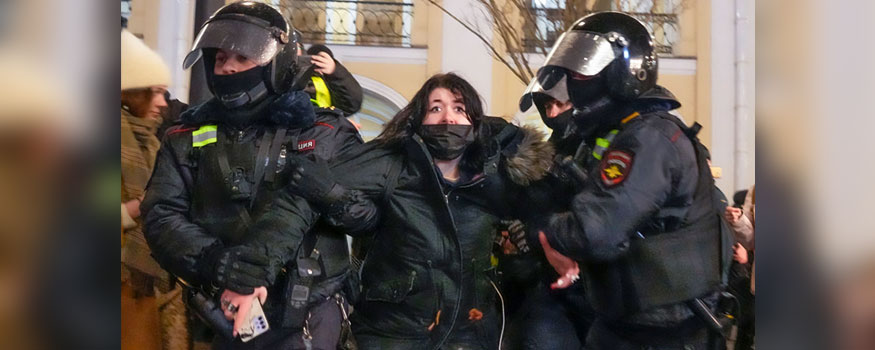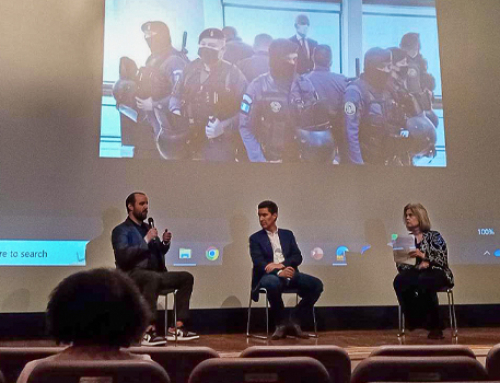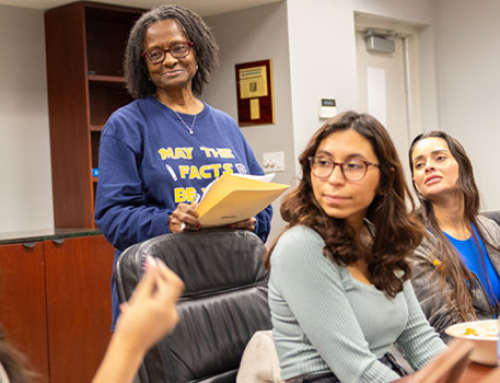By Barbara Gutierrez
New technologies have increased access for everyone to stories, images, and videos chronicling Russia’s unprovoked invasion of Ukraine and the resulting destruction and misery.
During the unprecedented incursion that Russia has unleashed on Ukraine, the interconnectedness and the immediacy and importance of social media have been starkly highlighted.
Facebook, TikTok, Instagram, and Twitter are full of photos and videos of shootings, explosions, and burned-out Russian tanks and buildings. There are also videos of protests from Berlin to St. Petersburg, abandoned bodies of soldiers, and a stream of Ukrainian refugees flooding into surrounding countries.
The internet has also allowed interaction between Ukrainians and people across the globe. These exchanges have helped the Ukrainians feel less isolated and have empowered many to reveal their personal stories, according to experts at the University of Miami.
“Our access through digital media allows us to witness the violence and resistance experienced by people around the world,” said Karin Wilkins, dean of the School of Communication and an expert on global media. “We are more connected as a global community than ever before.”
Although this immediate access to a major conflict is not entirely new—social media played a role in the uprisings of the Arab Spring, Iraq, and Afghanistan wars—the present conflict in Ukraine seems to put the conflict at our fingertips.
“I can’t think of any war, not even the 21st century wars in Iraq and Afghanistan, where social media has had such an impact,” said Heidi Carr, assistant professor of professional practice at the School of Communication. “Not everyone fighting has a javelin strapped to their shoulder; some of these battles are being won by those with a keyboard and a cell phone.”
Carr has been communicating with an artisan in Kyiv she met via Etsy.
“I sent him a message via the Etsy communication system just asking if he was OK and if there was anything we could do to help,” she said. “He wrote back within a few hours, talking about the cities that no longer exist and young women giving birth in the bomb shelters.”
Victor, the artisan, wrote that he was embarrassed to ask for help but if anyone could contribute funds, the money raised would go for medicine and food for those on the front line.
“I posted his message on Facebook, and a number of friends have also contributed via his PayPal account.
And in the midst of this war, he is replying to us via the Etsy message system how much our support means to the Ukrainian nation in this ‘war against darkness for peace,’ ” Carr said.
Indeed, during this conflict, new technologies have facilitated some strategies that had not been used before, including the following.
- The billionaire Elon Musk has offered access to his Starlink satellite to the Ukrainians to ensure they have access to the internet.
- Anyone can now follow where the Russian oligarchs have fled thanks to a Florida college student who created an algorithm that tracks their private jets, reported CBS News.
- Mothers and fathers of Russian soldiers who are searching for their sons can go to a website set up by Ukrainians that provides information about the whereabouts of the soldiers and information about whether they are captured or dead.
- The CBS News program “Sunday Morning” featured a group of young Ukrainians that call themselves a “social media resistance group” with a mission to send out media posts through TikTok, Instagram, and Facebook to disseminate information about the war.
Over the weekend, Russia imposed a 15-year prison sentence for any person or media organization that reports what the country labels as “fake news” about the incursion. Russian media outlets are forbidden to refer to the conflict as a “war”—instead they must refer to it as a military operation.
“Government controlled Russian media are portraying the invasion as a mission to rescue Ukrainians from a neo-Nazi government that threatens Russia,” said Joseph B. Treaster, a professor at the School of Communication and a veteran New York Times correspondent who has covered several wars.
Just how much social media messaging is getting into Russia is not clear. There have been reports of disruptions of the internet and cell phone service in the Ukraine, Treaster said, and Russia has reportedly blocked Twitter and Facebook.
“News reports say Russia has also blocked the websites of the BBC and the Voice of America,” he said, “and they say that Russian television and radio are not showing the shelling of Ukraine towns and cities and protests against the invasion.”
“Some Ukrainians,” he said, “told The New York Times that relatives and friends they phoned in Russia didn’t believe they were under siege.”
On Tuesday, The New York Times pulled its journalists from Ukraine. Meanwhile, the BBC sent its people back to the war-torn country.
Wilkins said that political leaders, such as Vladimir Putin, may attempt to restrict access to specific digital platforms like Facebook, but it is not possible to isolate people entirely from global media sources. “And that is a good thing,” she said.
Although social media offers an “up-close” and personal view of the war, some images have been manipulated, experts warn.
Treaster suggested that a critical eye is needed when viewing the war through the lens of social media.
“You have ordinary Ukrainians with cell phones sending out raw footage,” Treaster said. “They are under attack. They see a part of the picture. You have the Ukraine government and Russia with powerful social media skills sending messages. Often the source is unclear. It’s difficult to know what’s accurate, what’s real, and what’s manufactured.”






